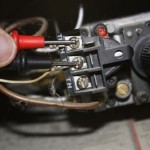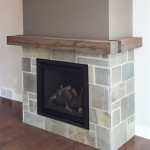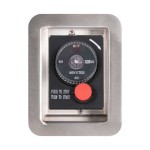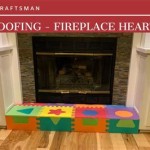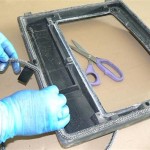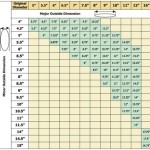Best Energy-Saving Electric Fireplaces
Electric fireplaces have become increasingly popular as a supplemental heating source and a decorative element in homes. Their appeal lies in their ease of installation, absence of combustion byproducts, and relatively low operating costs compared to traditional wood-burning fireplaces. However, not all electric fireplaces are created equal in terms of energy efficiency. This article explores key features and models to help consumers identify the best energy-saving electric fireplaces available on the market.
The primary function of an electric fireplace is to provide supplemental heat. This means it's not designed to replace the central heating system but rather to warm a specific area, such as a living room or bedroom. By effectively heating a smaller zone, users can potentially lower their overall heating bill by reducing the strain on their central heating system. The energy savings potential depends largely on the efficiency of the fireplace itself, the size of the space being heated, and the user's heating habits.
Several factors contribute to the energy efficiency of an electric fireplace. These include the type of heating element used, the presence of a thermostat, the insulation of the unit, and the inclusion of energy-saving features such as timers and adjustable flame settings. Consumers should carefully consider these features when selecting an electric fireplace to maximize energy savings.
Heating Element Technology
The heating element is the heart of any electric fireplace, and its technology significantly impacts energy consumption. Two primary types of heating elements are commonly used: coil heaters and infrared heaters. Coil heaters, also known as resistance heaters, work by passing electricity through a coiled wire, which heats up and radiates heat into the room. While relatively inexpensive to manufacture, coil heaters are generally less energy-efficient than infrared heaters.
Infrared heaters, on the other hand, use infrared radiation to directly heat objects and people in the room. This method is more efficient because it doesn't waste energy heating the air itself. Instead, the heat is focused on the areas where it's needed most. As a result, infrared heaters can provide more targeted and efficient heating, leading to lower energy bills. Quartz infrared heaters and ceramic infrared heaters are two common types, with ceramic heaters often considered more durable and longer-lasting.
When evaluating electric fireplaces, consumers should prioritize models with infrared heating technology, particularly those with ceramic infrared elements, for optimal energy efficiency.
Thermostat Control and Zone Heating
A thermostat is an essential feature for any energy-saving electric fireplace. It allows users to set a desired temperature, and the fireplace will automatically turn on and off to maintain that temperature. This prevents the fireplace from running continuously, which would waste energy. Analog thermostats offer basic temperature control, while digital thermostats provide more precise settings and often include additional features such as programmable timers.
The effectiveness of the thermostat is closely tied to the concept of zone heating. Zone heating involves heating only the rooms that are being used, rather than heating the entire house. By using an electric fireplace to heat a specific zone, users can significantly reduce their energy consumption compared to relying solely on the central heating system. A well-functioning thermostat ensures that the fireplace only operates when necessary to maintain the desired temperature in the designated zone.
Furthermore, some advanced models incorporate smart thermostats that can be controlled remotely via a smartphone or other device. These thermostats can learn the user's heating preferences and automatically adjust the temperature to optimize energy savings. Integration with smart home systems can further enhance energy efficiency by allowing the fireplace to respond to occupancy sensors or other environmental data.
Energy-Saving Features and Adjustable Flame Settings
Beyond the heating element and thermostat, several other features can contribute to the energy efficiency of an electric fireplace. Timers, for example, allow users to set the fireplace to turn off automatically after a predetermined period. This is particularly useful for users who tend to fall asleep while the fireplace is running or who want to ensure that the fireplace doesn't run unnecessarily when they are not home. Some models even offer programmable timers that allow users to set different schedules for different days of the week.
Adjustable flame settings are another important energy-saving feature. The flame effect in an electric fireplace is primarily decorative and consumes a relatively small amount of energy compared to the heating element. However, users can still save energy by turning down the brightness of the flame or turning it off altogether when heat is not needed. Many electric fireplaces offer multiple flame settings, allowing users to customize the appearance and energy consumption of the unit.
Furthermore, some models incorporate eco-friendly modes or energy-saver settings that automatically optimize the fireplace's performance for maximum energy efficiency. These modes may limit the maximum heat output, automatically adjust the temperature based on occupancy, or implement other strategies to reduce energy consumption without sacrificing comfort.
When selecting an electric fireplace, consumers should carefully examine the energy-saving features offered and choose a model that provides the flexibility and control needed to optimize energy consumption based on their individual heating needs and preferences.
Several models on the market are recognized for their energy-saving capabilities. These typically incorporate infrared heating, digital thermostats, timers, and adjustable flame settings. Specific brands and models may vary in terms of features and price, but some popular options include those from Dimplex, Duraflame, and Puraflame. It's recommended to compare specifications and read reviews before making a purchase.
In addition to the fireplace itself, proper installation and usage practices play a crucial role in maximizing energy savings. Ensure the fireplace is placed in a well-insulated area to prevent heat loss. Avoid placing it near drafty windows or doors. Regularly clean the fireplace to maintain optimal performance. Most importantly, use the fireplace responsibly, turning it off when not needed and setting the thermostat to a comfortable but energy-efficient temperature.
Electric fireplaces offer a convenient and relatively energy-efficient way to provide supplemental heat. By considering the type of heating element, thermostat control, energy-saving features, and installation practices, consumers can select a model that effectively heats their space while minimizing energy consumption. Choosing the right electric fireplace can contribute to lower energy bills and a more comfortable home environment.

ᑕ❶ᑐ Energy Efficient Electric Fireplaces For Your Home

9 Best Electric Fireplace Inserts Of 2024 Tested And Reviewed

Best Electric Fireplaces 2024
The 6 Best Electric Fireplace Heaters Of 2024

Are Electric Fireplaces Energy Efficient Direct Learning Center

The 5 Best Energy Saving Electric Fireplaces For Your Loft Loftway

Touchstone 80006 Forte Recessed Electric Fireplace With 1500w Heat Black Home S Inc

Here S All The Facts And Questions To Know About Electric Fireplaces
The 6 Best Electric Fireplace Heaters Of 2024

The Best Electric Fireplaces In 2024 Popular Science
Related Posts

